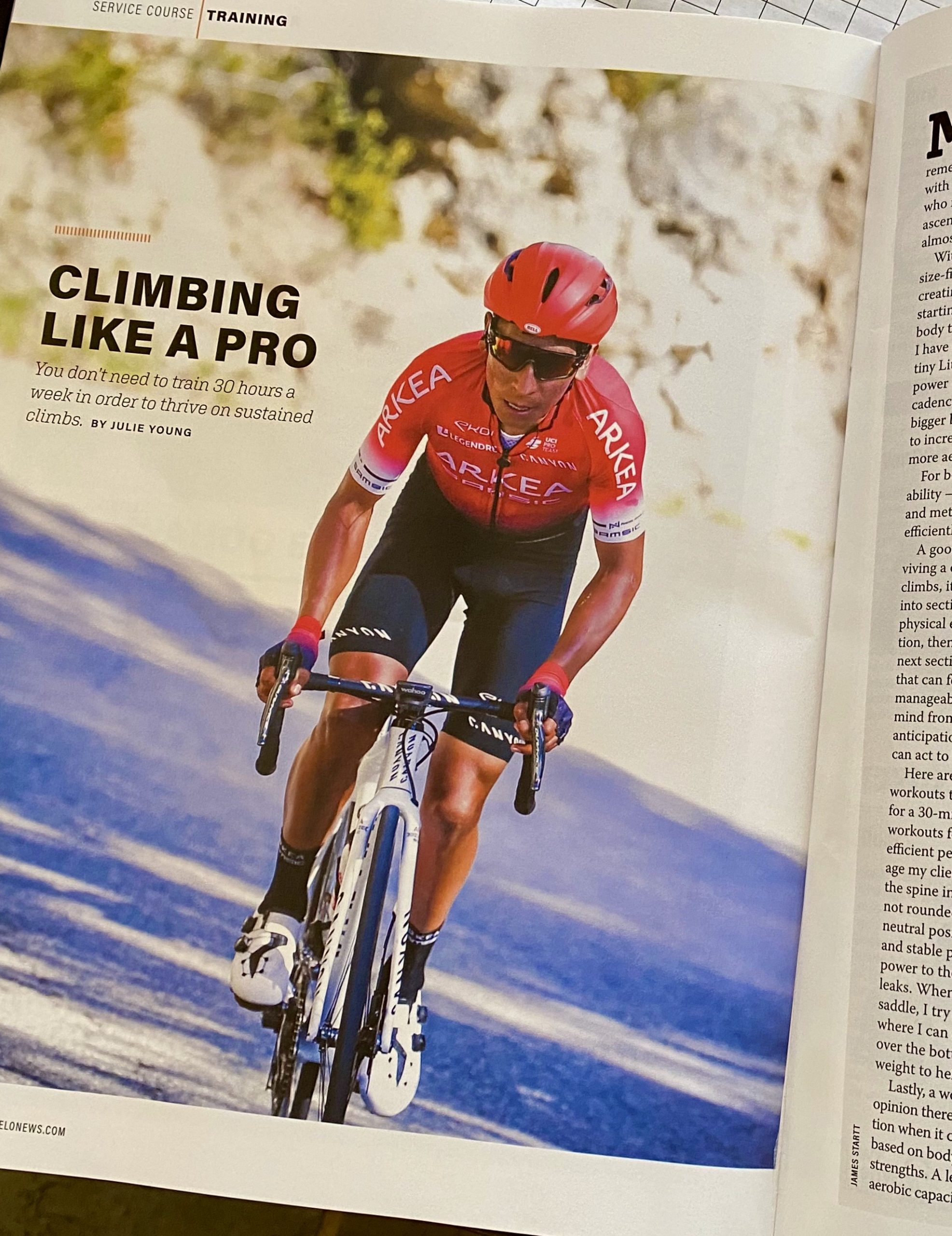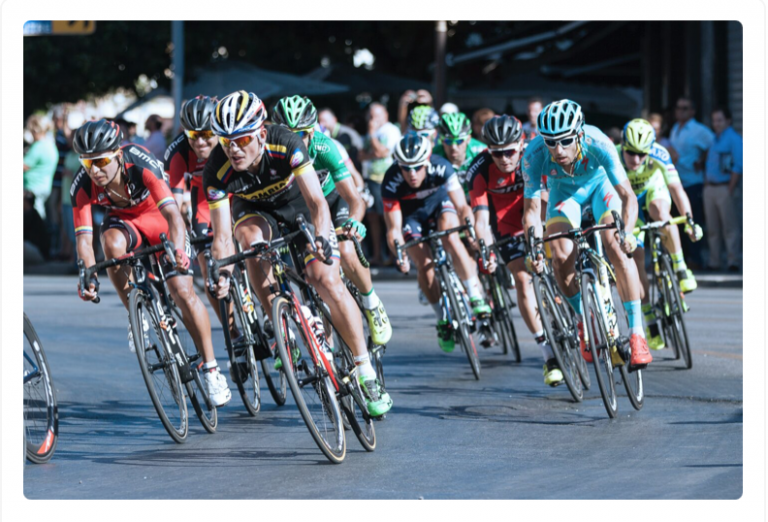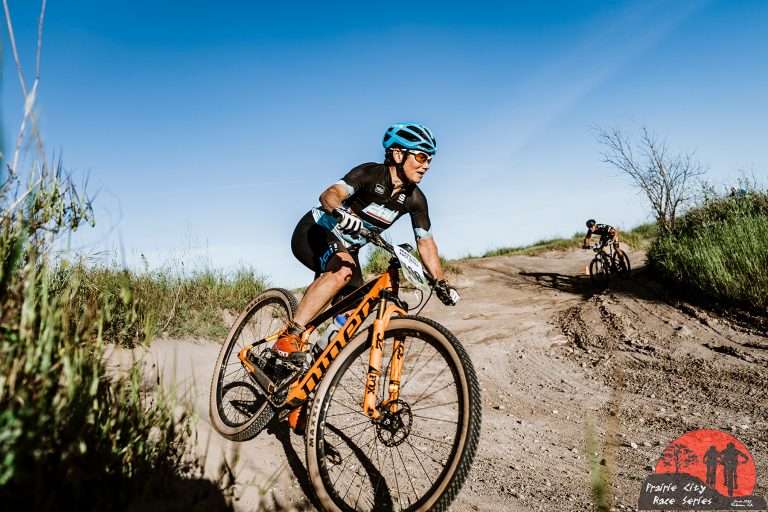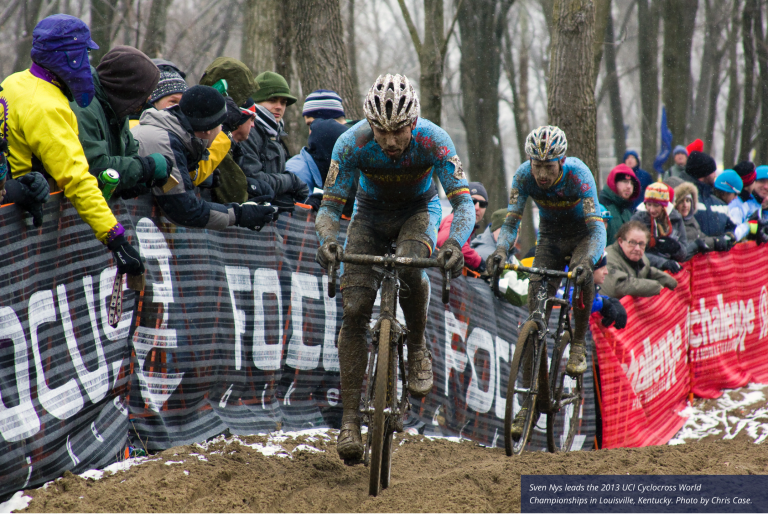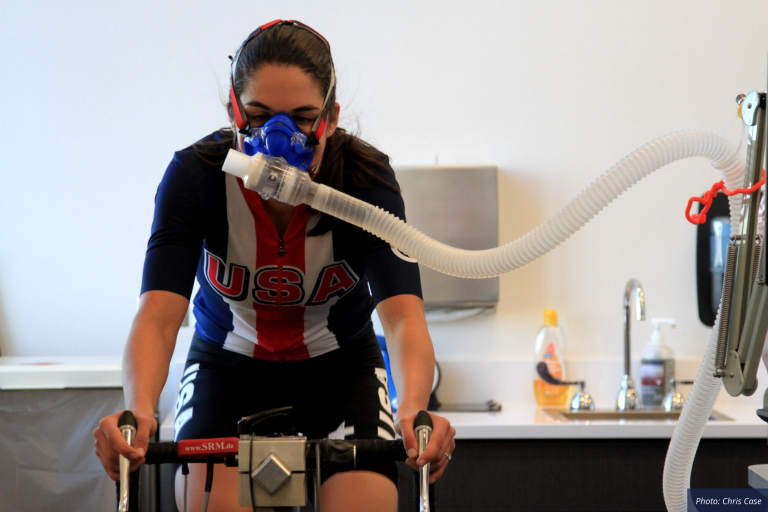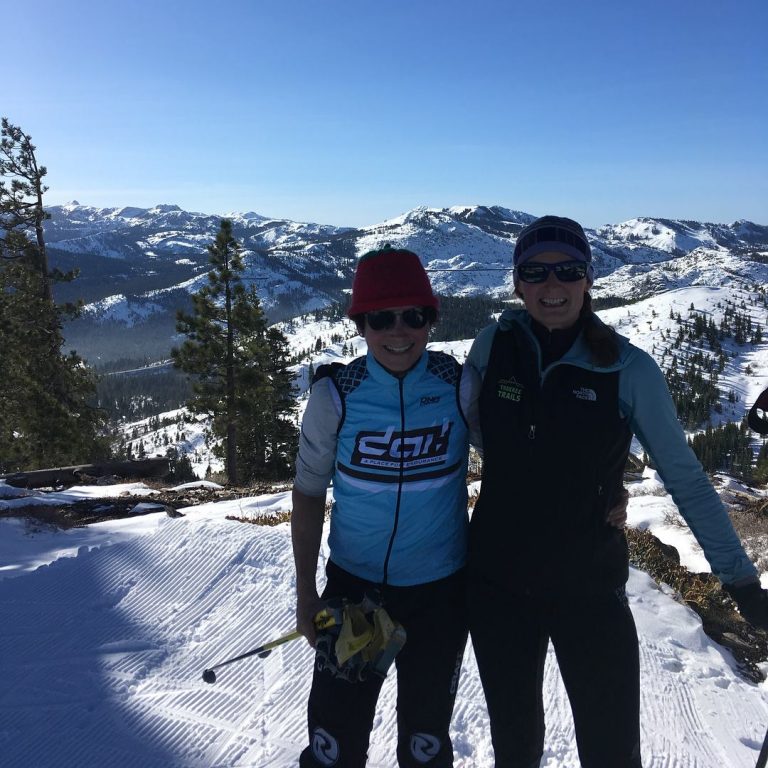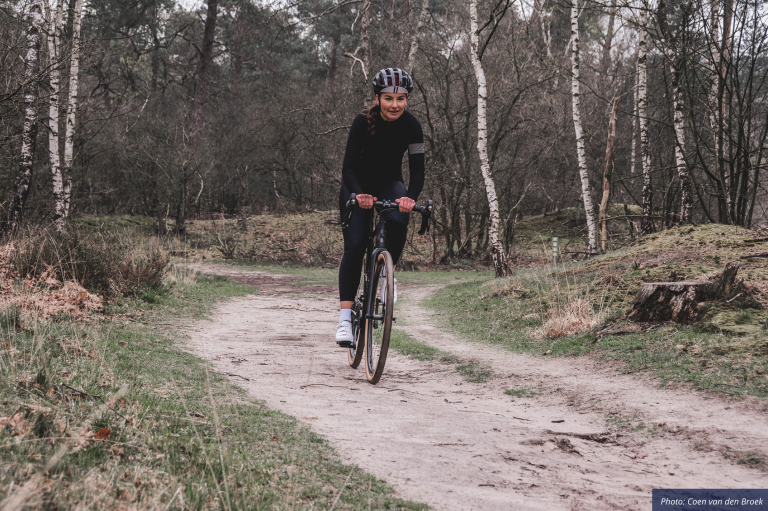Climbing Like a Pro – Velo News May 2020
Climbing Like A Pro – You don’t need to train 30 hours a week in order to thrive on sustained climbs.
Most of my cycling career was spent stage racing in Europe. I remember climbing Alpe d’Huez with a pair of tiny Lithuanian twins who climbed almost the entire 13k of Alpe d’ Huez out of the saddle. We finished the climb together, but I had done it almost entirely in the saddle. With climbing, just like everything else in life, there is no one size fits all technique or style. When creating hill workouts for my clients, my starting point is understanding the differences in their body type and physiologic strengths. I have one client who is built like the tiny Lithuanians. She needs to develop power on the climbs at a lower cadence. Another client, who has a bigger build and more power, the focus is higher cadence to deliver more aerobic capacity. For both, I need to improve their ability – mechanically, muscularly and metabolically to climb more efficiently. The trick lies with having a variety of workouts in their plans to train all of the factors and capitalizing on their body type to maintain their relative strengths.

Increase Power, Improve Mechanics and Pedaling Efficiency
Here are a few of my favorite workouts to hone climbing fitness for a 30-minute climb. During these workouts focus on finding a smooth efficient pedaling rhythm. Don’t wrestle the bike, that defeats the purpose. I also like to encourage my clients to think about keeping the spine in a neutral vs rounded position. This neutral position is our most strong and stable position to reduce “energy leaks” and deliver more power to the pedal. When climbing out of the saddle, I try to find that sweet spot, where I can keep my center of mass over the bottom bracket and use that weight to help push the pedals. Lastly, a word about cadence. In my opinion there is no absolute prescription when it comes to cadence. This is based on body types and physiologic strengths. For example, if a lean marathon runner, who has a huge aerobic capacity, but not much muscle mass converts to cycling. They will use that high aerobic capacity and manifest it with higher cadences. The person with more muscle mass will tend toward lower cadences.
Warm- up
For all of these workouts, I give my clients a warm-up that includes 6x30sec-1min, each leg single leg drills. Single leg drills are a valuable starting point to break down the movement, provide feedback on weak areas around the pedal stroke, and reveal differences between the left and right, in terms of coordination and strength.
In-saddle cycling specific strength and power, and pedaling mechanics
Goal: Smooth pedaling under resistance, recruit the right muscle group at the right time around the pedal stroke
Grade: 4-5%
RPM: 40 -60
Start these at a medium endurance (ME) intensity with 8×4 minutes and build to 6 minutes. Over time transition the ME intensity to threshold, starting with 1 minute at threshold and 5 minutes at ME, increasing your threshold minutes weekly. Transitioning this workout from ME to threshold, transitions the workout from developing cycling specific strength to specific power. Recovery approximately two to three minutes.
Short speed and power efforts to develop in- and out-of-saddle mechanics
Goal: Efficiently generate power and transfer it into the pedals
Grade: 4-5%
RPM: 40 -60
Start from a very slow roll, over-geared, and complete 4 sets of 4x 30 second efforts, increasing cadence to 40-60rpm, hitting Vo2 intensity (over time, working up to anaerobic capacity) for the final 15-20sec. Recovery 1.5 minutes. Build number of sets, up to four.
Another workout of this type would be out of the saddle sprints. Increase the grade to 8-10%.
From a rolling start, perform 2-3 sets of 3 x 30 second efforts. On the first effort you are significantly over-geared, next effort slightly over-geared and final effort optimally geared. Recovery, minimum of three minutes.
Sub-threshold to threshold hill intervals
Goal: Smooth pedaling under resistance
Grade: Simulate goal climb
RPM: Riders choice for efficiency
Start with 3 x 10 minutes, alternating 4 min at sub-threshold + 1 min at threshold. Continue to advance this workout by changing the ratio weekly and then start extending out the time, for example 2 x 15 minutes, working toward your 30minute effort.
Another variation on this workout would be to include some out-of-saddle efforts. These are a great way to experience the mental and physical change in rhythm and sensation between in and out of saddle climbing. Start with 4 x 7 min at sub-threshold, and every 2.5minutes, get out of the saddle for 30 seconds, then back into the saddle at sub-threshold. Advance these to 4 x 9 min.
A Few Thoughts on the Mental Aspect of Climbing
As in many aspects of cycling, the mental approach is as important as the days of training. For long climbs, it helps to break the climb into sections. Focus your mental and physical energy in the current section, then tick it off and focus on the next section. This breaks a long climb that can feel overwhelming into manageable sections and stops your mind from wandering up the road in anticipation of what lies ahead, which can act to limit your current effort.
Fitting Hill Work In to the Your Week
Monday – Stability-mobility day
Tuesday – Speed and power workout
Wednesday – Hill intervals
Thursday – Long endurance
Friday – Off or stability-mobility
Saturday – Flatter, fast-paced group ride
Sunday – Long endurance

